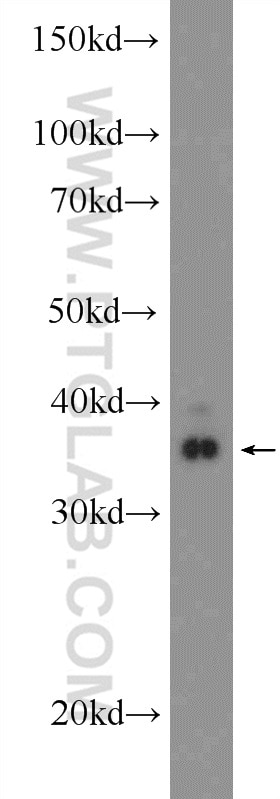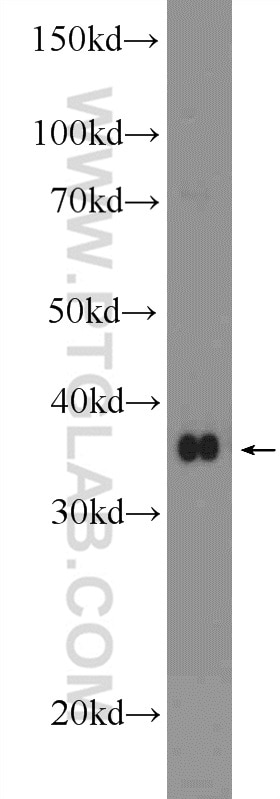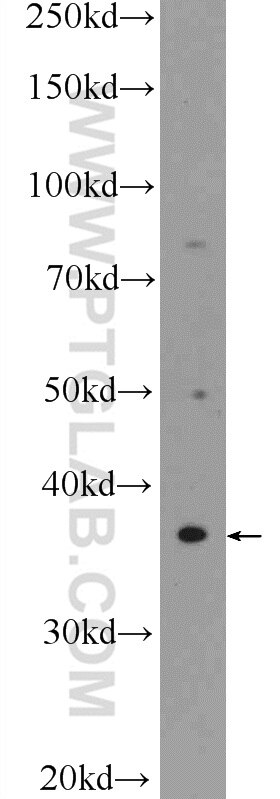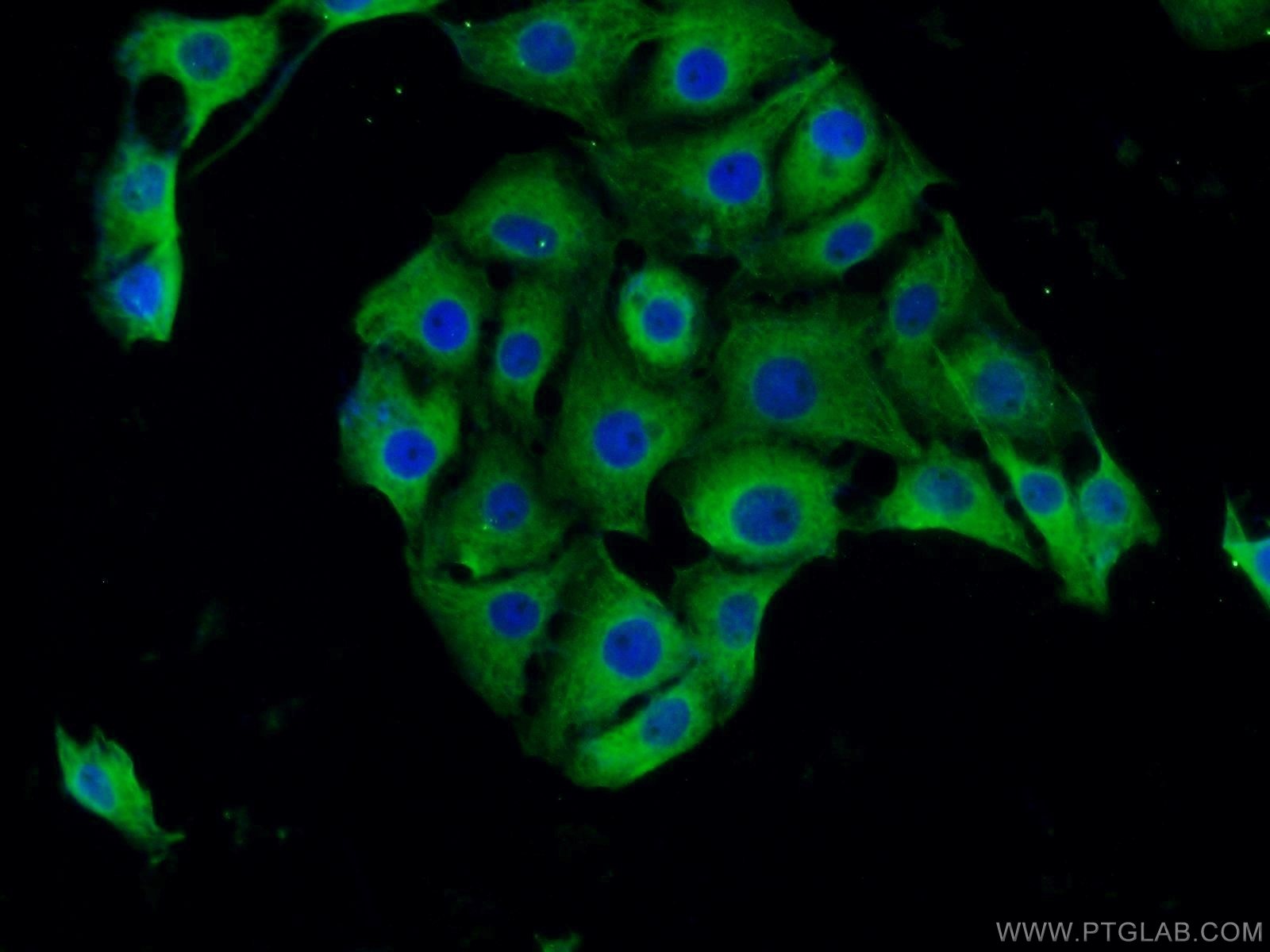BHLHE22 Polyklonaler Antikörper
BHLHE22 Polyklonal Antikörper für WB, IHC, IF/ICC, ELISA
Wirt / Isotyp
Kaninchen / IgG
Getestete Reaktivität
human, Maus und mehr (1)
Anwendung
WB, IHC, IF/ICC, ELISA
Konjugation
Unkonjugiert
Kat-Nr. : 25622-1-AP
Synonyme
Geprüfte Anwendungen
| Erfolgreiche Detektion in WB | SH-SY5Y-Zellen |
| Erfolgreiche Detektion in IHC | humanes Hirngewebe Hinweis: Antigendemaskierung mit TE-Puffer pH 9,0 empfohlen. (*) Wahlweise kann die Antigendemaskierung auch mit Citratpuffer pH 6,0 erfolgen. |
| Erfolgreiche Detektion in IF/ICC | SH-SY5Y-Zellen |
Empfohlene Verdünnung
| Anwendung | Verdünnung |
|---|---|
| Western Blot (WB) | WB : 1:200-1:1000 |
| Immunhistochemie (IHC) | IHC : 1:50-1:500 |
| Immunfluoreszenz (IF)/ICC | IF/ICC : 1:10-1:100 |
| It is recommended that this reagent should be titrated in each testing system to obtain optimal results. | |
| Sample-dependent, check data in validation data gallery | |
Veröffentlichte Anwendungen
| WB | See 2 publications below |
Produktinformation
25622-1-AP bindet in WB, IHC, IF/ICC, ELISA BHLHE22 und zeigt Reaktivität mit human, Maus
| Getestete Reaktivität | human, Maus |
| In Publikationen genannte Reaktivität | Maus, Ziege |
| Wirt / Isotyp | Kaninchen / IgG |
| Klonalität | Polyklonal |
| Typ | Antikörper |
| Immunogen | BHLHE22 fusion protein Ag20966 |
| Vollständiger Name | basic helix-loop-helix family, member e22 |
| Berechnetes Molekulargewicht | 381 aa, 37 kDa |
| Beobachtetes Molekulargewicht | 37 kDa |
| GenBank-Zugangsnummer | BC156671 |
| Gene symbol | BHLHE22 |
| Gene ID (NCBI) | 27319 |
| Konjugation | Unkonjugiert |
| Form | Liquid |
| Reinigungsmethode | Antigen-Affinitätsreinigung |
| Lagerungspuffer | PBS with 0.02% sodium azide and 50% glycerol |
| Lagerungsbedingungen | Bei -20°C lagern. Nach dem Versand ein Jahr lang stabil Aliquotieren ist bei -20oC Lagerung nicht notwendig. 20ul Größen enthalten 0,1% BSA. |
Hintergrundinformationen
Basic helix-loop-helix family member e22 (BHLHE22), a basic helix loop helix transcription factor family member, acts as a transcriptional repressor and has a role in cell differentiation in neuron development (PMID: 36941015). BHLHE22 expression serves as a potential biomarker for ICI treatment prediction and favorable prognosis, and that is associated with microenvironment immune status (PMID: 35806162).
Protokolle
| PRODUKTSPEZIFISCHE PROTOKOLLE | |
|---|---|
| WB protocol for BHLHE22 antibody 25622-1-AP | Protokoll herunterladen |
| IHC protocol for BHLHE22 antibody 25622-1-AP | Protokoll herunterladenl |
| IF protocol for BHLHE22 antibody 25622-1-AP | Protokoll herunterladen |
| STANDARD-PROTOKOLLE | |
|---|---|
| Klicken Sie hier, um unsere Standardprotokolle anzuzeigen |
Publikationen
| Species | Application | Title |
|---|---|---|
Cell Metab Deubiquitinase OTUD3 regulates metabolism homeostasis in response to nutritional stresses. | ||
PLoS One Chi-miR-4110 promotes granulosa cell apoptosis by targeting Sma- and Mad-related protein 2 (Smad2) in the caprine ovary. |






